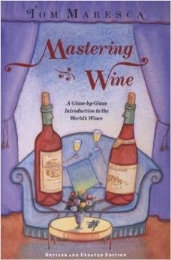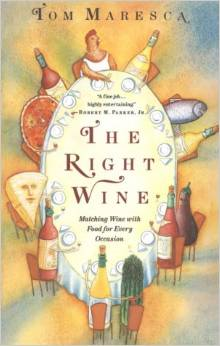Back during the annual ritual known as spring cleaning – misnamed, I think: It should more properly be called spring messing – Diane asked me that question. I was momentarily dumbfounded, and all I managed to say was a lame “37?”
Many years ago, when she asked me a similar question – “Why do we have 44 bottles of grappa?” – I was able to confidently and truthfully say “Because I’m working on a big article on grappa for Decanter.”
That wasn’t the whole truth, as anyone who knows my fondness for grappa understands, but it was at least a plausible cover for my shameless indulgence. Back then, I could honestly claim to be the most important proponent of grappa in the US: I had published the first North American article about grappa back in the 80s, in Attenzione, and written about it in several other magazines as well – so I could, with a straight face, say I had a professional interest in that distillate.
But now that I am no longer an active wine journalist (except for this blog), how could I explain needing so many brandies?
.
Had I not been taken by surprise, the answer was easy, really: They all have different uses, different niches that they fill. Just as I am passionate about matching a wine with food that will show it at its best (and vice versa), so am I interested in choosing the digestivo that will best complement the dinner I’ve just enjoyed.
That’s the real key for me: Call them brandies or digestivi or after-dinner drinks, whether it’s grappa or cognac or armagnac or marc, malt whiskies or curaçao or chartreuse, whatever their name, their function for me is to complete my meal, to round off the whole culinary experience. That may sound pompous, but it tends to be delicious – and figuring it all out is sheer fun.
So: Shameless self-indulgence once again, with a slight admixture of self-education. As Brillat-Savarin so well understood, a true gastronaut’s work is never done.
You can be forgiven for wondering what all those bottles are, and what niches I think they fill. A fair enough question, so here’s a broad rundown. For simplicity’s sake, let’s divide them, as those in the liquor trades often do, into “white goods” and “brown goods.”
White goods consist primarily of my beloved grappas, of which I like to keep a goodly selection on hand – grappas of Barbera and Dolcetto and Nebbiolo, Tuscan grappas, even southern Italian grappas, from Campania and Calabria and Sicily, all regions where this originally northern drink has gotten a firm hold.
.
.
Each of these grappas differs from the others in basic ways, having the aromas and characters of the very different grapes from which they are made, and so meshing with very different meals. I take almost as much pleasure in making the right match as I do in actually drinking the grappa.
This category also includes tequilas, a class of drinks that I have been late in coming to appreciate, as well as eaux de vie of mirabelle, poire, and/or framboise, all offering a small explosion of fruit aromas and flavors. Served ice-cold, they can be by themselves a perfect summer dessert.
.
.
Then we come to the brown goods, which will be more familiar to most people than the white. These may include barrel-aged grappas, but mostly they are cognac, armagnac, and an occasional marc. Burgundy and various appellations of the Rhône are my usual sources for marc.
I like to keep on hand a basic cognac and armagnac, as well as better bottle or two – a good vintage of armagnac, and for cognac a reliable producer’s more rarefied selection of vintages or areas of growth, such as Grand Champagne or Borderies. And not to forget Spanish brandies, which are very different in character from their French counterparts.
.
.
Finally, I always need to have a few single malt scotches on hand, and Diane is occasionally fond of an herbal liqueur or plum brandy.
.
.
Those bottles arm me for most contingencies and pretty much any sort of cooking my fair bride may wish to do; and that gives me a great sense of security and comfort, a very desirable condition for the aging wino. Also – I confess to a bit of showmanship – at the end of a dinner party, I like to set out 4 to 6 different bottles for our guests (and ourselves) to sniff and choose from. And that’s why we have 37 – or whatever the number may be now – bottles of brandy.
.
P.S. from Diane, who has just counted them: It’s only 29 now. Poor baby!
P.P.S. from Tom: I must do something about that!

















